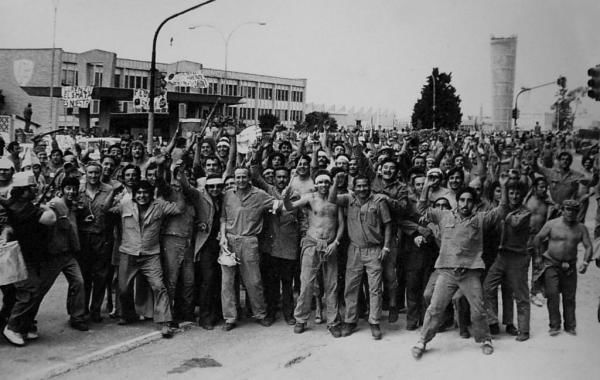Revision Notes: Independence and Partition of India | History and Civics Class 10 ICSE PDF Download
| Table of contents |

|
| Introduction |

|
| Events Leading to the Cabinet Mission Plan |

|
| The Mountbatten Plan |

|
| The Indian Independence Act of 1947 |

|
Introduction
By the end of the Second World War, India’s struggle for freedom had entered a crucial phase. However, this period was marked by great difficulty. The Indian National Army (INA) had faced a disappointing defeat, the memories of the Quit India Movement were still fresh, and the Muslim League was loudly demanding the creation of a separate state called Pakistan. In this challenging situation, Lord Wavell proposed the ‘Wavell Plan,’ which aimed to grant dominion status to India and allowed Indians to draft their own Constitution.
Events Leading to the Cabinet Mission Plan
Changes in Britain
- After World War II, the USA and Russia emerged as the two strongest powers in the world, both supporting India’s demand for freedom.
- In the British parliamentary elections, the Labour Party replaced the Conservatives. Many Labour Party members supported the Congress Party’s demands for Indian independence.
- After six years of war, British soldiers were not inclined to spend more time suppressing India’s demand for independence.
Revolts within Administrative Agencies

- The British government could no longer depend on Indians for administrative tasks or to suppress the Indian National Movement. The Indian National Army (INA) demonstrated that patriotic sentiments had infiltrated the Indian army as well.
- The uprising of Indian Naval Ratings in Mumbai in 1946 further weakened the government's control over military ranks.
- Strikes by the Royal Indian Air Force also contributed to the unrest.
- Patriotic feelings were beginning to emerge within the Police and Civil Services as well.
Labour Unrest

- Labour unrest was on the rise across the country. In July 1946, postal and telegraph workers held an all-India strike.
- Railway workers followed suit with a strike in August 1946.
- Peasants in Bengal initiated the Tebhaga Struggle, demanding to pay only one-third of their produce to landlords instead of one-half.
- Protests against high rent rates erupted in regions such as Hyderabad, Malabar, Bengal, Uttar Pradesh, Bihar, and Maharashtra.
During this period, nationalist sentiments were spreading throughout the country, with people increasingly demanding complete independence from British rule.
Cabinet Mission in India
In 1946, Clement Attlee, the new Prime Minister of Britain, sent the Cabinet Mission to India to discuss the transfer of power to Indians. The Cabinet Mission, consisting of three cabinet members, arrived in India to negotiate the terms of this transfer.
Clauses of the Cabinet Mission Plan
- The Cabinet Mission suggested creating a federal union in India, comprising British Provinces and princely states. The Central Government would oversee defence, foreign affairs, and communications.
- The Indian Union was to have its own executive and legislature, while Provinces would enjoy complete autonomy over all subjects except union subjects.
- British Provinces would be grouped into three major categories, with the option for a province to join a different group by majority vote.
- The plan included establishing a Constituent Assembly of 389 members to draft the Indian Constitution, with separate representation for Muslims and Sikhs.
- An interim government with 14 members was to be formed at the Centre.
- India could choose to remain within the British Commonwealth or secede from it.
- A treaty between the Constituent Assembly and Britain would address matters arising from the transfer of powers.
- The Cabinet Mission Plan rejected the demand for Pakistan due to concerns about communal harmony, the inclusion of non-Muslim districts, the decision-making of princely states, and the challenges of dividing armed forces and communication systems.
Reaction to the Cabinet Mission Plan
The Congress accepted the Cabinet Mission Plan with some reservations, particularly regarding the formation of an interim government with limited powers.
The Muslim League fully accepted the proposals, believing that the grouping of Muslim-majority provinces would eventually lead to the formation of Pakistan.
Conflicts between Congress and Muslim League
- In the July 1946 elections for the Constituent Assembly, the Congress secured a two-thirds majority, while the Muslim League won 73 out of 78 Muslim seats.
- The Muslim League feared being outvoted in the Assembly and anticipated that power would transfer to Hindus after the British departure.
- On September 2, 1946, Jawaharlal Nehru and others were sworn into the Viceroy’s Council, an event the Muslim League did not participate in.
- The day was marked as 'a day of mourning' by the League, which urged Muslims across the country to display black flags.
- After numerous attempts and discussions by the viceroy, the Muslim League, led by Jinnah, consented to join the interim government to protect minority interests. However, the League's members refused to collaborate with Nehru's leadership.
- The Constituent Assembly convened on December 9, 1946, without the League's members.
- The Assembly passed a resolution declaring India an independent sovereign republic.
Attlee's Announcement
Due to ongoing conflicts between the Congress and the League, the interim government was not functioning effectively. Consequently, Attlee and the Parliament decided that power should be transferred to Indians as soon as possible.
The Mountbatten Plan
To facilitate the transfer of power, Lord Wavell was replaced by Lord Mountbatten as the new Viceroy of India. One of his immediate tasks was to restore peace between the Congress and the League. Recognizing the inevitability of India's partition, he devised a plan for transferring power from Britain to India.
Mountbatten Plan
Lord Mountbatten proposed the partition of India and presented his plan to seven prominent leaders, including Nehru, Patel, and Jinnah. The plan was accepted by both the Congress and the League. The key features of the Mountbatten Plan included:
- Division of British India into India and Pakistan.
- Both countries would decide their relationship with the British Commonwealth and each other.
- Princely states would have the freedom to join either India or Pakistan.
- Partition of Bengal and Punjab, subject to approval by their Legislative Assemblies.
- A plebiscite in the Northwest Frontier Province to determine its affiliation.
- A referendum in the Muslim majority province of Sylhet to decide its association with East Bengal or Assam.
- Formation of a separate Constituent Assembly for Pakistan's Constitution.
- Power transfer was to occur before June 1948, with the British Parliament passing an Act for this by August 15, 1947.
Acceptance of the Mountbatten Plan
The Mountbatten Plan was met with mixed reactions across India. Nationalists were dissatisfied with the country's partition, while both the Muslim League and the Congress accepted the plan.
- Widespread communal violence and conflicts in the country led many to believe that partitioning British India was the only way to reduce communal tensions.
- The Muslim League had joined the interim government to hinder the Congress's efforts, and Congress eventually realized that cooperation with the League was not feasible.
- It was thought that a federation with a weak central authority was the only alternative to partition, but a smaller India with a strong central government was considered preferable to a larger state with a weak centre.
- The continued presence of the British in India was seen as dangerous, especially as they were encouraging Indian princely states to remain independent. Therefore, partition was seen as the price for India's immediate independence.
- Leaders also feared that any delay in transferring power could lead to a civil war in the country.
The Indian Independence Act of 1947
After the Mountbatten Plan was accepted, the British House of Commons passed the Indian Independence Act. The key provisions of the Act were:
- Two separate dominions, India and Pakistan, were to be created. Pakistan would consist of NWFP, Sindh, Baluchistan, West Punjab, and East Bengal. A Boundary Commission would be established to determine the exact boundary between the two nations.
- Bengal would be divided if the people chose to do so. The provincial assemblies of the Hindu-majority and Muslim-majority districts would vote to decide whether or not they wanted the state to be divided.
- A plebiscite would be held in NWFP and Sylhet in East Bengal to determine whether they wanted to join India or Pakistan. NWFP became part of Pakistan, while Sylhet joined East Bengal, now known as Bangladesh.
- A Governor-General would be appointed for each dominion until the respective constitutions were established.
- The legislative power of the British Parliament would end on August 15, 1947.
- Until the new constitutions were framed, both dominions would be governed according to the Government of India Act of 1935.
- The King’s right to veto laws was abolished, and this power was transferred to the Governor-General.
- The princely states would become independent from British control and were free to join either India or Pakistan.
- Provisions were made to divide the Indian army and other assets and liabilities between the two dominions.
- The position of Secretary of State for India was abolished, but measures were taken to protect the interests of the officers appointed by the Secretary of State.
On August 15, 1947, India and Pakistan became two independent nations. Jawaharlal Nehru became India’s first Prime Minister, while Muhammad Ali Jinnah became Pakistan’s first Governor-General. The independence of India also influenced other freedom movements around the world. However, the celebrations in India were overshadowed by violence during the partition of the country.
In the immediate aftermath of partition, India faced numerous challenges, including underdeveloped agriculture and low industrial progress. Over time, through strategic economic planning and various government programs aimed at improving agriculture, boosting industrial development, and creating employment opportunities, India's economy began to grow. Today, India not only exports various agricultural products but is also one of the world's major industrialized nations.
|
28 videos|176 docs|28 tests
|
FAQs on Revision Notes: Independence and Partition of India - History and Civics Class 10 ICSE
| 1. What were the key events that led to the Cabinet Mission Plan in India? |  |
| 2. What was the main objective of the Mountbatten Plan? |  |
| 3. How did the Indian Independence Act of 1947 impact the subcontinent? |  |
| 4. What were the reactions of Indian leaders to the Cabinet Mission Plan? |  |
| 5. What role did the British government play in the events surrounding India's independence and partition? |  |















